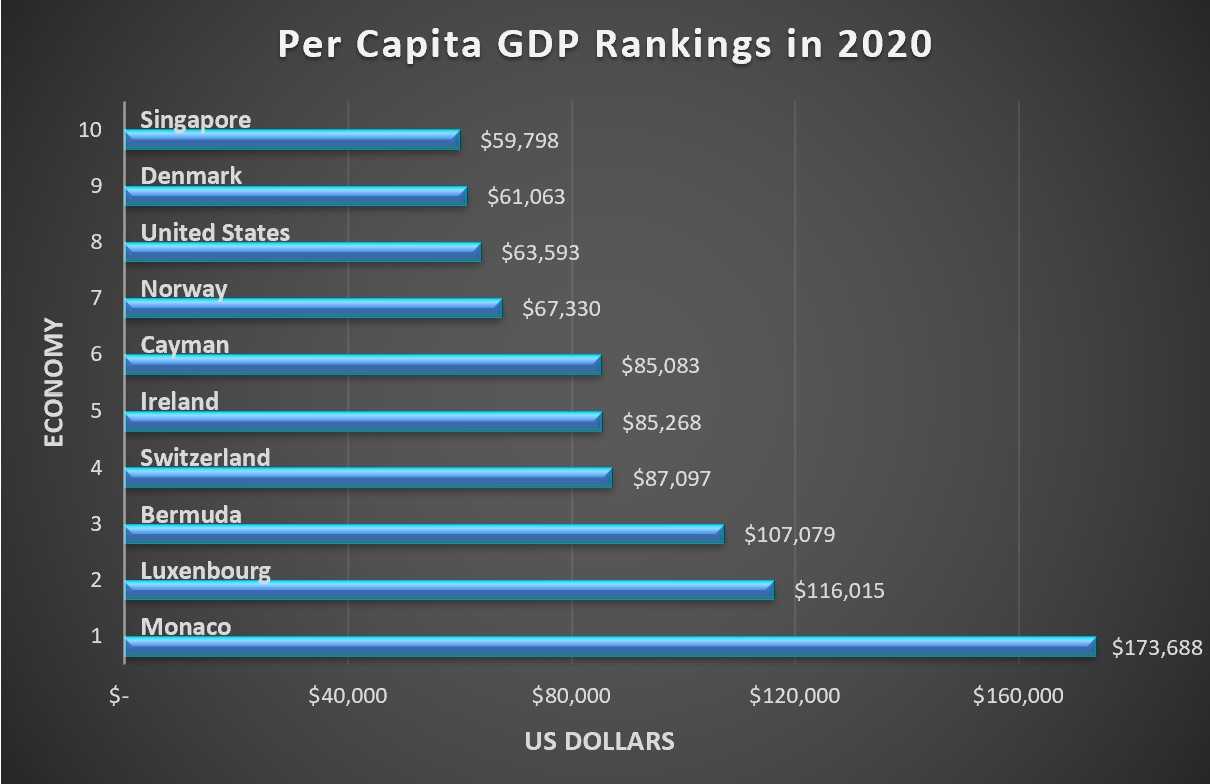Per capita means per person, so the per capita GDP is the average amount each person contributes to a population’s gross domestic product.
GDP on its own only provides a limited view of the economic health and general welfare of a population. Economists measure the quality of life in a country by its standard of living. Included in the standard of living are the wealth, availability of affordable housing, environmental cleanliness, quality and availability of health care, life expectancy, distribution of income, and many other variables. GDP alone inadequately reflects a country’s standard of living. We can understand this dynamic more by examining the relationship between GDP, per capita GDP, and the standard of living.
Wealth is an important component of a country’s standard of living. But, wealth needs to be measured on an individual basis. Economists use per capita GDP, or the average amount each person contributes to a population’s gross domestic product, to measure wealth on an individual (per capita) basis. Because gross domestic production must equal gross domestic income, per capita GDP is also a measure of a population’s average income. The graph below ranks countries by their per capita GDP in 2020. To view other countries, visit the link to the World Bank’s website below the graph.

Source: World Bank Per Capita GDP
A close review of the rankings of per capita GDP reveals the complexities of large economies because all but one of the largest economies fail to make the top ten. (To view the largest ten economies go to Gross Domestic Product – Measuring an Economy's Performance.) The discrepancy between the largest economies and the per capita GDP rankings highlights the need to express GDP on a per capita basis. Some countries with relatively low GDP may have higher per capita GDP than countries with a high GDP.
As we already know, the standard of living considers other variables that determine the quality of life. Generally, a person’s standard of living will correlate positively with their income level, which can lead some people to erroneously associate wealth with happiness. This common belief about the relationship between income and personal satisfaction may skew how the average person interprets GDP and per capita GDP.
Per capita GDP reveals the average income of a population and is sometimes viewed as a country’s standard of living, but some nations have a high concentration of wealth. In other words, there are a few very wealthy individuals and a much greater population of poverty-stricken families. An economy with concentrated wealth may have a per capita GDP equal to an economy with more evenly distributed wealth. In spite of this, the standard of living and economic health of the economy with a higher concentration of wealth would be lower than the country with the more evenly distributed wealth. Income distribution contributes to the overall standard of living because more of the citizens share in their economy’s prosperity.
Gross Domestic Product – Measuring an Economy's Performance
Business Cycles
Comparative Advantage and Specialization